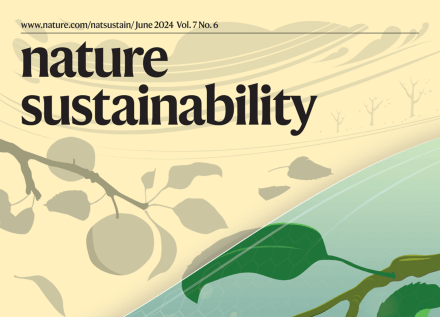March 2025: Standing Up for Science
In this edition:
- The Problem with Polymers
- Safe & Sustainable: Powered or Liquid Laundry Soap?
- Flame Prevention is Better than Flame Retardants
- Berkeley Himalayan Fair, May 17 & 18, 2025
- Arlene and the Green Science Policy Institute in the News
- Calendar
I hope you had a good winter and are looking forward to spring. I just celebrated a big birthday with good friends and family by the ocean in beautiful Carmel—a joyful gathering in these challenging times. During the party we appreciated joining with “Stand up for Science” rallies across the country as in the photo below.

In response to the current situation in Washington, DC, the Institute is moving some of our policy work to California. So far this year, we are making some great strides. Based in part on our paper on the harms and lack of benefit of antimicrobials in many consumer uses, Assemblymember Alex Lee introduced the Safer Soap Act to ban antimicrobials in consumer hand soaps in California. The bill is co-sponsored by Children Now and Women’s Voices for the Earth, and we are providing scientific support.
We are delighted that yesterday the Safer Soap Act passed the Committee on Environmental Safety and Toxic Materials in the California Assembly. We are optimistic it will be successful and protect people, especially children, from washing their hands and bodies with unnecessary and harmful antimicrobial chemicals. Is your organization or company interested in supporting the Safer Soap Act? Get in touch with Rebecca at [email protected].
The general belief has long been that polymers—very large molecules—are too big to migrate out of products into people and therefore can not cause health harm. As aresult, polymers have largely avoided regulation. However, a groundbreaking paper we recently co-authored in Nature Sustainability demonstrates that polymers can break down into smaller harmful chemicals. With the widespread uses of polymers in everyday products, this finding has major implications for our health and environment. Our joint study was discussed in informative articles in Technology Networks, Inside Climate News, and others as below.
I'd also like to share with you the backstory of the seven years of diligent work that led to this polymer paper. In April 2018, I had lunch with the senior author Da Chen and his Canadian PhD advisor Rob Letcher, who are leading analytic chemists. I asked them to consider studying the important and technically challenging questions of how polymers break apart; if the pieces can get into the environment; and if they are harmful. They listened politely, and then I didn't hear anything more for five years.
In 2023, Da wrote me that since our lunch he and his team had been studying the breakdown of polymers. After many false starts, they had succeeded with three innovative experiments showing that a polymer commonly used in electronics called polyBFR could break apart into smaller fragments and identified 76 breakdown products. Then they found these same breakdown products in the environment near electronics recycling facilities and finally carried out studies showing that some are harmful. Following two more years of writing and reviewing, to our delight, the paper Environmental impacts of polymeric flame retardant breakdown was finally published in the high impact journal Nature Sustainability a couple weeks ago--seven years after our lunch. My hope is that the diligent work of Da Chem and his team that led to this paper will contribute to the needed regulation of polymers.
In mountaineering news, Thirty Below, a new book about our 1970 first all-women's expedition to summit Denali, the highest mountain in North America, is receiving alot of press. The book is based in part on on my memoir Breaking Trail: A Climbing Life. If you buy both books together, it could help a new generation of readers discover Breaking Trail. A related article in Vanity Fair recounts stories from my childhood and background during the years leading up to the Denali expedition and the heroic rescue of the unconscious leader as told in my memoir.
For Women’s History month, Berkeley Online published an interview with me entitled “Going for the Gusto: Arlene Blum has followed her instincts and curiosity to scale multiple summits“.
Finally, I hope you’ll join me for the fun and festivities at the 42nd annual Berkeley Himalayan Fair on May 17 and 18. This is one of my favorite community events of the year. You can learn more below.
Kind regards,
Arlene and the Green Science Policy team
P.S. I would like to hire an experienced part-time personal assistant with strongcomputer skills to work with me in Berkeley on evenings and/or weekends for several hours per week. Please email me if you are interested or know someone appropriate for this position.
The Problem with Polymers
By Rebecca Fuoco
It has been long believed that polymers—very large molecules—are too big to migrate out of consumer products into people and therefore pose no health risks.
As a result, polymers have largely evaded regulation. For example, polymers are exempt from the major toxics acts in the United States and Europe. However, a bombshell study, suggested and coauthored by our Institute in Nature Sustainability provides evidence that polymers can break down into smaller harmful chemicals.
The researchers tested two polymeric brominated flame retardants that were developed as “non-toxic” alternatives to banned flame retardants. They found that both broke down into dozens smaller toxic molecules. The scientists found the same polymer break-down products in soil, air, and dust near electronics recycling facilities--with the levels decreasing further away from these sites.
Importantly, the study also has implications for other types of polymers used in consumer products, including PFAS. As we showed in our Institute's joint research papers, PFAS polymers are used in textiles including children’s uniforms, in food packaging, and in cosmetics to name a few uses. Although the producers of PFAS argue that fluorinated polymers should be exempt from regulation, scientists maintain that fluorinated polymers are members of the class of PFAS and that the use of the whole class of PFAS should be avoided.
“To escape regulation, flame retardant and PFAS producers are increasingly turning to polymers for use in everyday products,” says Arlene. “As a result, problematic polymers can emit toxic small molecules from products we touch, sit on, wear, and keep in our homes. Regulators need to close this loophole to protect consumers—especially children—from the possible chemical harm.”
Safe & Sustainable: Powered or Liquid Laundry Soap?
By Marty Mulvihill, Safer Made & Green Science Policy Advisory Board member
When shopping for laundry soap at your local grocery store, consider reaching down to the bottom shelf for a powdered detergent rather than the liquid one at eye level. You may be surprised to learn that powdered detergents and bar soaps are more effective cleaners, gram for gram, than liquids and they require less plastic packaging. They are also safer and overall more sustainable.

Liquid formulations of detergents, soaps, and cleaning products packaged in plastic bottles first appeared in the 1970s, taking advantage of affordable plastic packaging and chemical preservatives. However, the surfactants, builders, solvents, and chelating agents needed to make a stable liquid product decrease the efficacy of the cleaning agents.
If you are looking for products with more sustainable packaging and without harmful chemicals (including antimicrobials such as benzalkonium chloride or other QACs with names ending in -nium chloride), the answer may be sitting on the bottom shelf in the supermarket. Consider switching from liquids to solids and be wary of detergent sheets which also rely on additional polymers and additives that don't help you clean and may harm the environment.
In summary, powder and solid soaps are a win-win choice: they use less plastic packaging, preservatives, and other chemicals of concern – and they are more effective.
Listen to a podcast on "Soap, A Cleaner Solution" & Choose Powdered Laundry Detergent" here.
Flame Prevention is Better than Flame Retardants
by Lydia Jahl
When relatively new technologies have widespread issues—like rechargeable batteries catching on fire more frequently—people often scramble for a quick fix. While battery fires are a serious problem, solutions that use toxic flame retardant chemicals in plastic enclosures without evidence for a fire-safety benefit may lead to more harm than good.
Along with University of Toronto scientists, we published a Viewpoint article in Environmental Science & Technology, discussing how battery standards are increasingly requiring plastic battery enclosures to pass flammability tests. These tests are most affordably passed with the use of flame retardant chemicals, which can be carcinogenic, neurotoxic, and endocrine-disrupting. To our knowledge, these standards were written quickly
without first determining if these old flammability tests (intended for electronic enclosures) apply well to battery systems where the potential ignition sources are much different.
Fire scientist Dr. Vyto Babrauskas said of lithium-ion batteries undergoing thermal runaway, “Trying to stop thermal runaway fires by adding flame retardants to plastic is like adding a screen door to a submarine. It's a futile effort against an overwhelming force.”
We hope that governmental authorities and standard setting bodies will investigate the fire-safety benefit of requiring flammability ratings for battery enclosures and compare that to the known costs, including health and ecological harm, impaired circular economy, and more toxic battery fires. Simultaneously, manufacturers and policy makers can work on measures to prevent battery fires from occurring in the first place.
Learn more by reading our Viewpoint here.
Berkeley Himalayan Fair, May 17 & 18, 2025
Please join me at the 42nd annual Himalayan Fair.
You are invited to enjoy the music, dance, food, crafts and arts of the Himalayas at the Himalayan Fair, which will be held in Live Oak Park, 1300 Shattuck Avenue in North Berkeley, California on Saturday and Sunday
May 17 and 18. The fair’s profits go directly to the Himalayan regions as donations to orphanages, health clinics, and other Himalayan charities.
Please stop by the Green Science Policy Institute booth under the big tree northeast of the stage to enjoy the entertainment. Contact me if you’d like to help out with the fair or at my booth across from the entertainment.
I describe starting the Fair in 1983 after returning from a year of enjoying Himalayan festivals while walking across the Himalayan regions of Bhutan, Sikkim, Nepal and India in my memoir, Breaking Trail. More information about the Himalayan Fair is here.
Arlene and the Green Science Policy Institute in the News

By Rebecca Fuoco
Below are recent news articles, blogs, podcasts, newsletters, and more that have featured our Institute's work and expertise.
- See our latest columns in Forbes on corporate sustainability and lithium-ion batteries.
- Our joint study finding polymers can break down into small toxic molecules was covered in Inside Climate News, The New Lede, Technology Networks, Earth.com, and others. See this video Q&A with Arlene by Technology Networks.
- Our Viewpoint on flame retardants in battery enclosures was covered by Popular Science, Environmental Health News, Technology Networks, SlashGear, Waste & Recycling, Canadian Firefighting, R&DWorld, and more.
- Arlene’s Denali climb (as recounted in Breaking Trail) was in Vanity Fair, Time, Climbing Magazine, the Guardian, and more.
- Arlene was listed as one of America’s greatest mountaineers by Advnture.
- Arlene was interviewed by CBC News about Canada’s ban of PFAS in clothing.
- Arlene was interviewed by the New York Times publication Wirecutter about her work removing flame retardants from children’s pajamas.
- Arlene was interviewed about mountaineering and science for UC Berkeley’s Equity & Inclusion article: Arlene Blum has followed her instincts and curiosity to scale multiple summits.
- PFAS Central was recommended as a resource in an article in The Cool Down.
- KPFA radio aired Green Street with Patti & Doug Wood speaking with Arlene Blum about "Living in a World of Chemicals."
Calendar
March 28, 2025 at 12:30 to 2:00 PM Pacific:
Arlene Blum will present a Zoom keynote for the “Women in the Future of Work” day at Virginia Tech University. The title of her talk is “Climbing your own Everests: Mountains and Molecules.” The event will be jointly sponsored by the Center for Future Work Places and Practices and the Virginia Tech Pamplin College of Business. You can register to watch on Zoom here.
March 28, 2025 at 4:45 to 6:25 PM Pacific:
Bioneers in Berkeley, California
Arlene Blum and Marty Mulvihill of Safer Made will have an illustrated conversation on “Living In the Toxic Soup: Solutions to the Legacy of Forever Chemicals”. Here is the event link.
April 9, 2025, 9 to 10:15 AM Pacific:
Arlene Blum will present a zoom webinar for the Sustainable Furnishings Council called “Tackling Toxics: Healthier Furniture, People & Planet. Here are the event link and the direct Zoom link to register.
May 7, 2025, 7 to 8:30PM Pacific:
Berkeley City Club - Arts & Culture Lecture Series
2315 Durant Ave., Berkeley California
Arlene Blum will present "From Mountains to Molecules: Tackling Toxics To Protect People and Our Planet." Register here.
May 17 & 18, 2025:
Annual Berkeley Himalayan Fair
Live Oak Park, 1300 Shattuck Avenue at Berryman, North Berkeley.
Enjoy the food, music, dance, crafts and arts of the Himalayas. Profits go to Himalayan charities. Contact Arlene if you would like to volunteer to help at the Fair or her booth. More information here.
Receive Updates By Email
Subscribe to our monthly newsletter and get these updates delivered right to your inbox!



